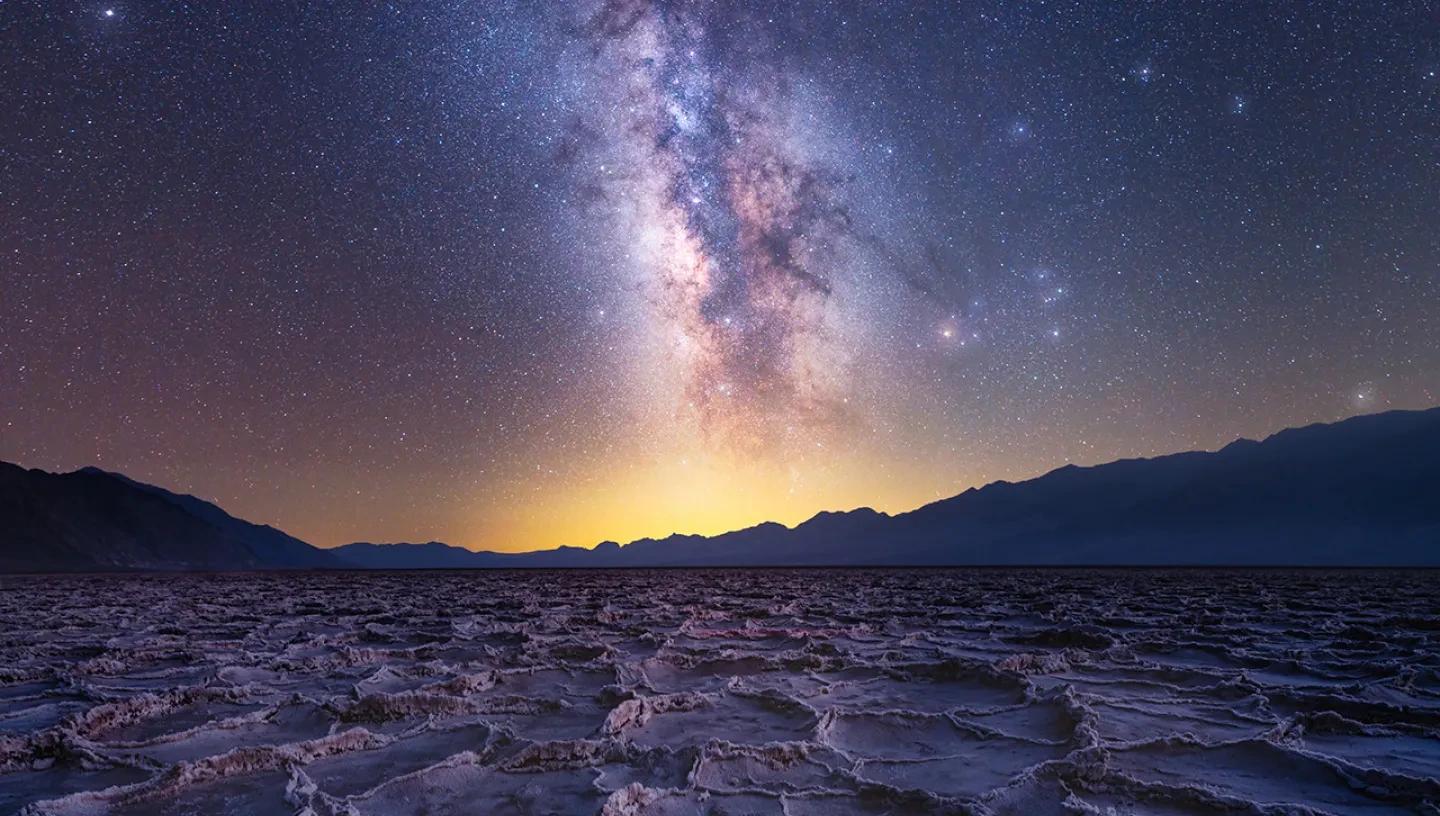
The shortlist for Astronomy Photographer of the Year has been revealed!
Astronomy Photographer of the Year is the largest astrophotography competition in the world. Every year we receive thousands of entries, showcasing some of the most outstanding space photography from around the globe.
This is the 14th edition of the competition, and it has seen more than 3,000 images submitted from 67 different countries across the globe – but who is in the running for the grand prize?
Check out a selection of images from the incredible shortlist below, and follow the competition on social media using the hashtag #APY14. The winners will be revealed in a special online awards ceremony on 15 September.
Never miss a shooting star
Sign up to our space newsletter for exclusive astronomy news, guides and events, and be among the first to see this year's Astronomy Photographer of the Year winners
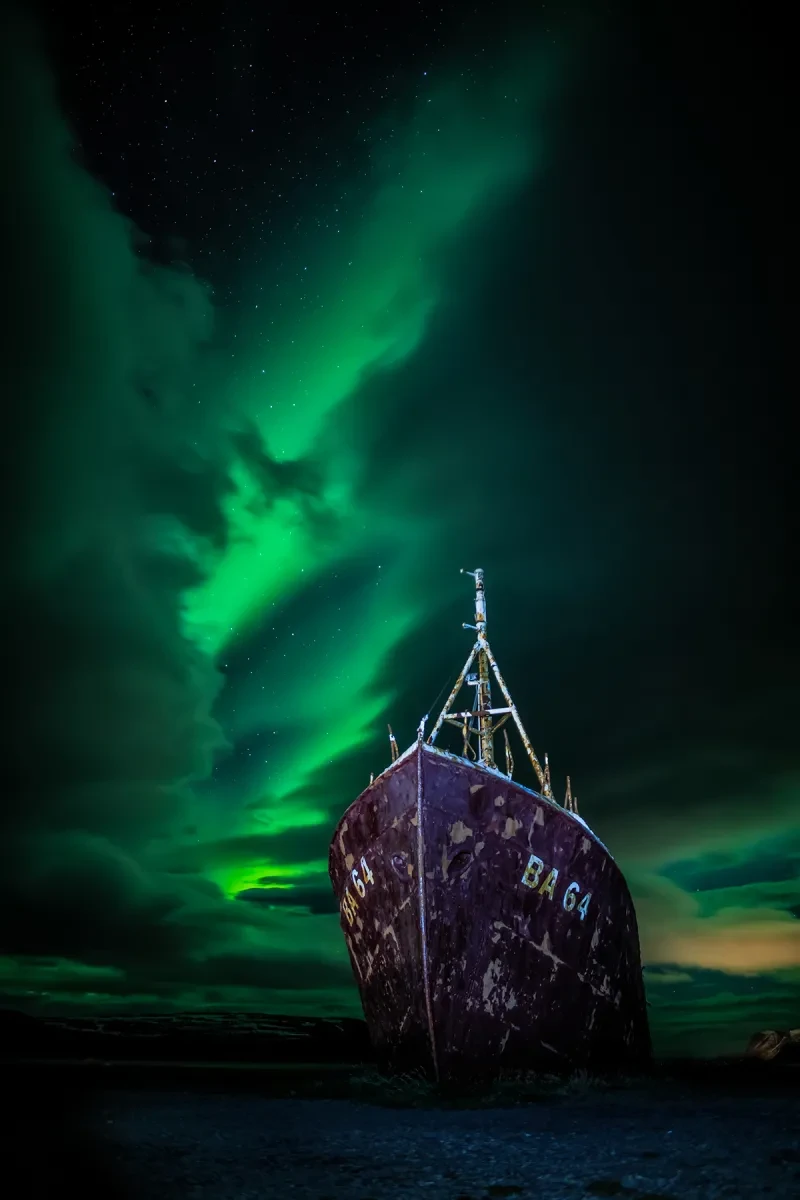
An Icelandic Saga by Carl Gallagher
Patreksfjörður, Westfjords, Iceland, 10 March 2021
This image of the Aurora Borealis and the wreck of the Gardur was the culmination of a 9-day, 2,500-mile road trip chasing gaps in the cloud all over Iceland. This is a single exposure, with the foreground lightly painted. The aurora forecast was good, as was the weather forecast, which predicted the clouds would clear.
It was quite a powerful experience to see this rusting vessel, once a whaling ship, now sitting on the beach at the end of the fjord with the aurora just beginning to appear through gaps in the cloud. Usually, I get quite irate with clouds, yet with this image I think they add a certain drama to the shot. I never stack, blend or stitch images – it’s just a simple, single, moment in time.
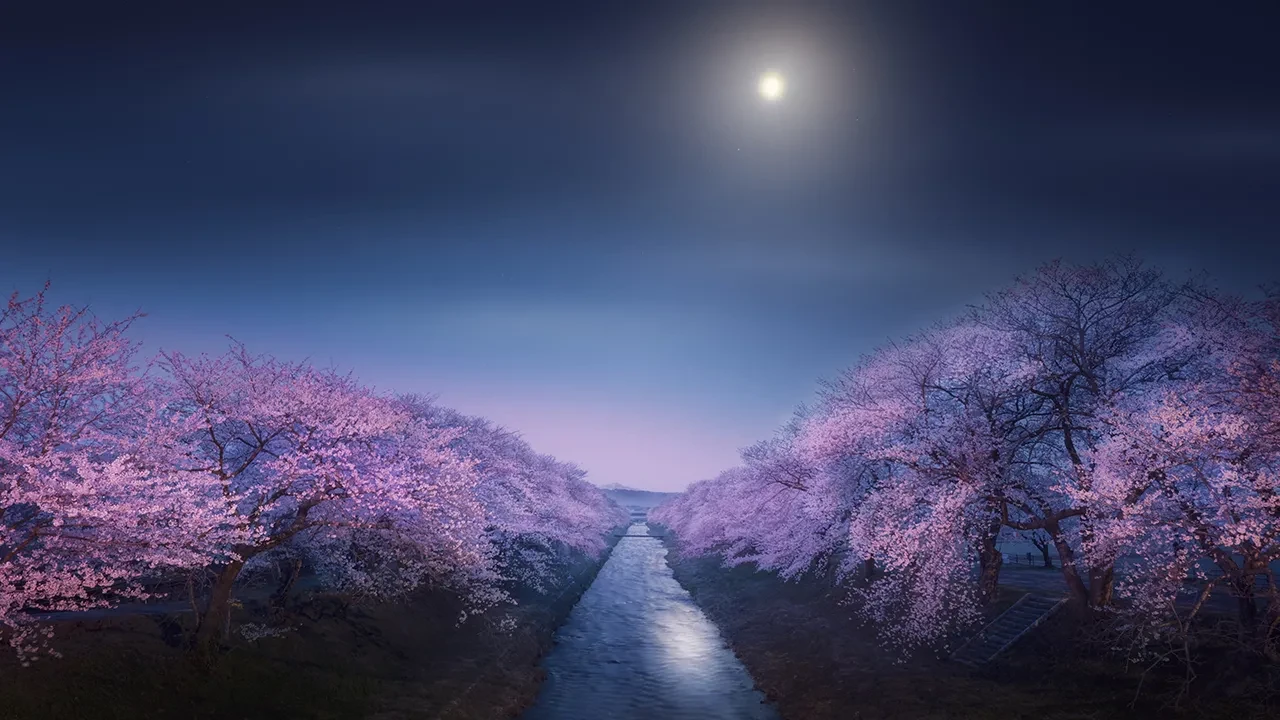
Riverside of Funakawa in Spring by Takanobu Kurosaki
Asahi, Shimoniikawa, Toyama, Japan, 2 April 2021
When the Funakawa River was renovated in 1957, locals planted about 280 Yoshino cherry trees along its banks. They have been carefully maintained for many years.
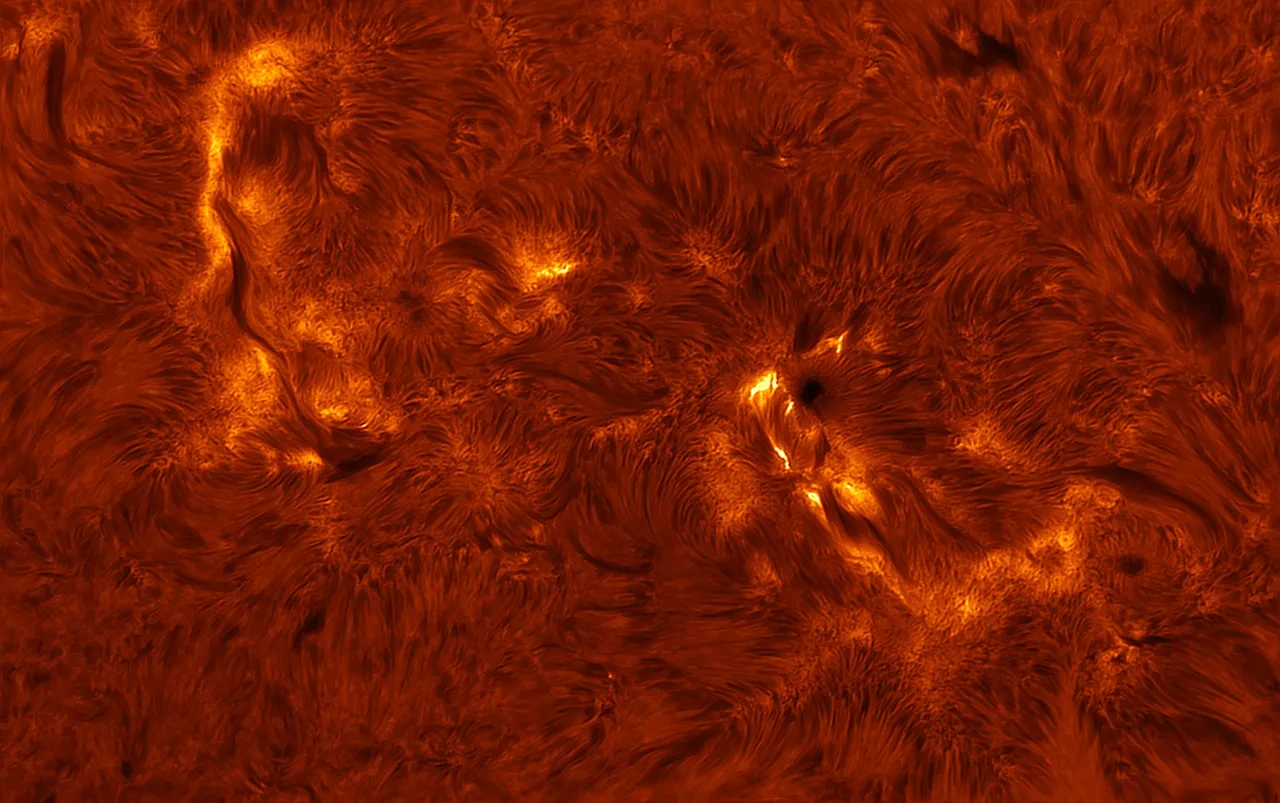
Solar Inferno by Stuart Green
Preston, Lancashire, UK, 19 December 2021
The Sun is a fascinating target for enthusiastic amateur astronomers and professionals alike. Ever-changing, it looks different on every occasion as new sunspots form, develop, grow and eventually fade away, often with attendant filaments and occasionally solar flares.
All of this is made visible by selectively filtering out all wavelengths of light except for a narrow red band at 656.28 nm. The H-alpha line, as it is known, can be packed full of such visual goodies, as in this image of Active Region 12907. It was taken using a 150-mm refractor operating at f/34 with filters to isolate the H-alpha line. 2,500 separate frames were stacked, deconvoluted, sharpened and coloured to create the fiery glow.
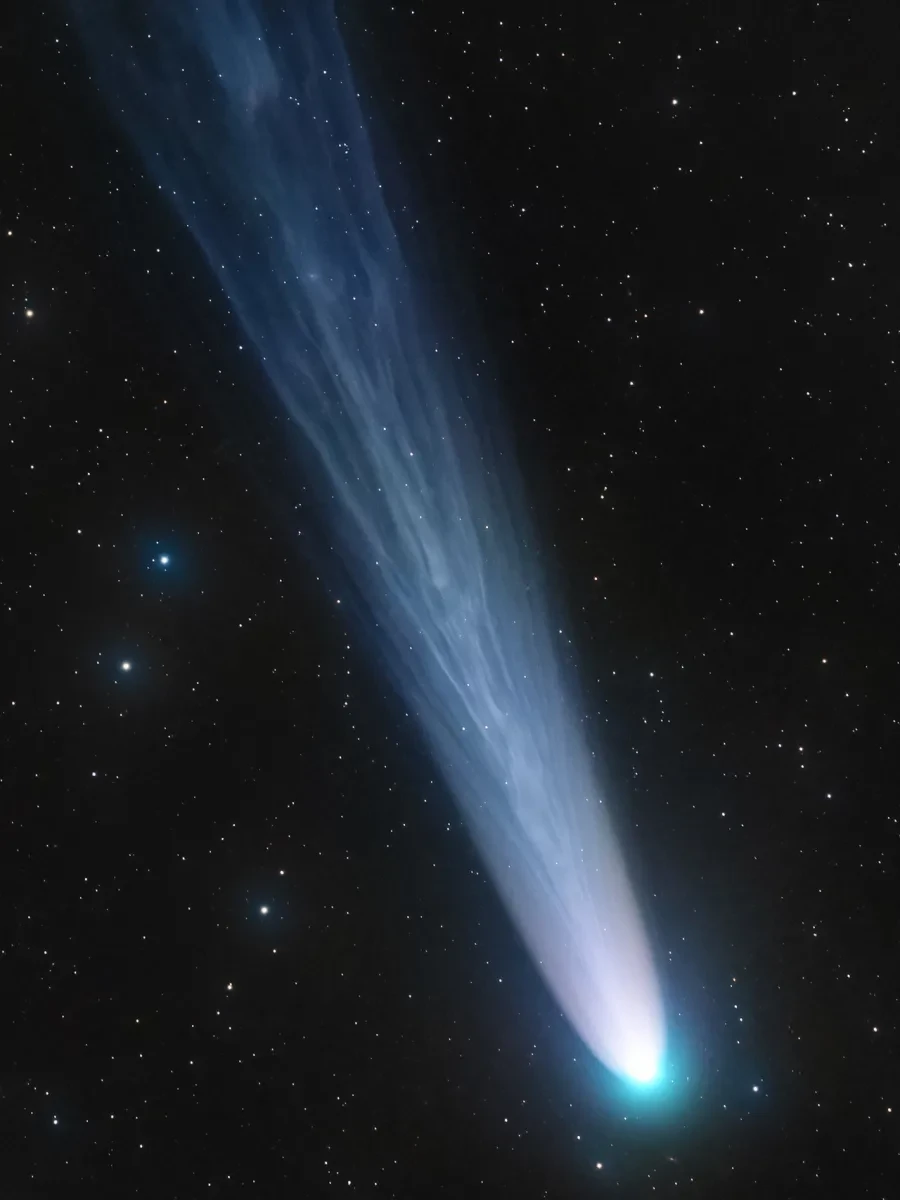
Comet C/2021 A1 (Leonard) by Lionel Majzik
Hakos, Khomas, Namibia, 27 December 2021
The most spectacular comet of 2021 produced several major outbursts in the final days of the year. By then, the comet was only visible from the Southern Hemisphere, forcing northern astrophotographers to use the southern robotic telescopes.
Fortunately, on 27 December 2021, I managed to get a quarter-hour booking for the world’s most popular robotic telescope at the time – the 200-mm telescope from Skygems Remote Observatories in Namibia. Photography was hampered by overcast weather conditions, but I was delighted to capture the incredibly spectacular comet Leonard with its tail.
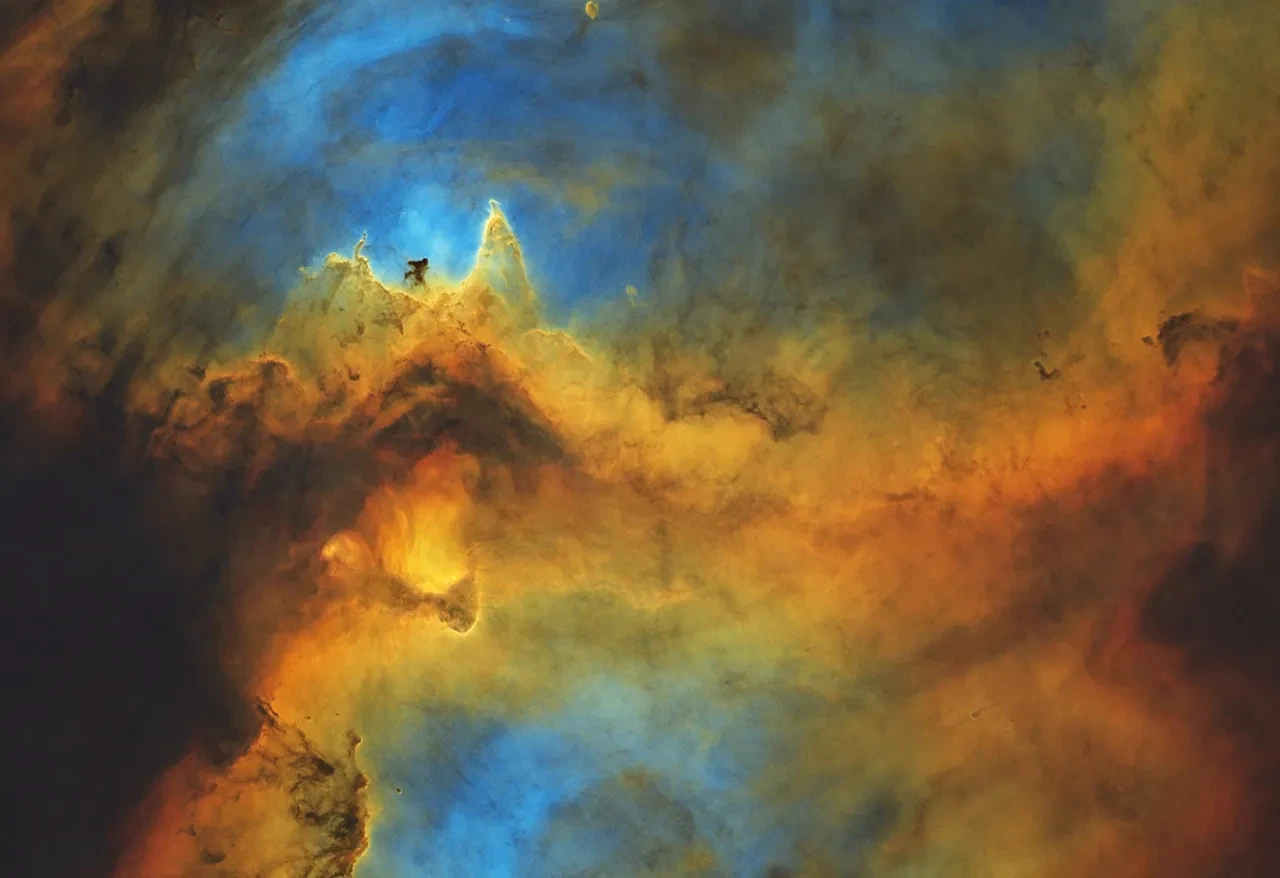
IC1871 - A Little Devil Riding on the Head of a Dragon by Binyu Wang
China, 12 December 2021
This image shows the Soul Nebula (IC 1848) and its core (IC 1871). The Soul Nebula is an emission nebula located in Cassiopeia. IC 1871 is like a little devil riding on the head of a dragon, overlooking the boundless sea of stars. In the east of the Soul star cloud, there is a complex of nebulae and star clusters known as the Heart Nebula (IC 1805). Together they are often called ‘Heart and Soul’.
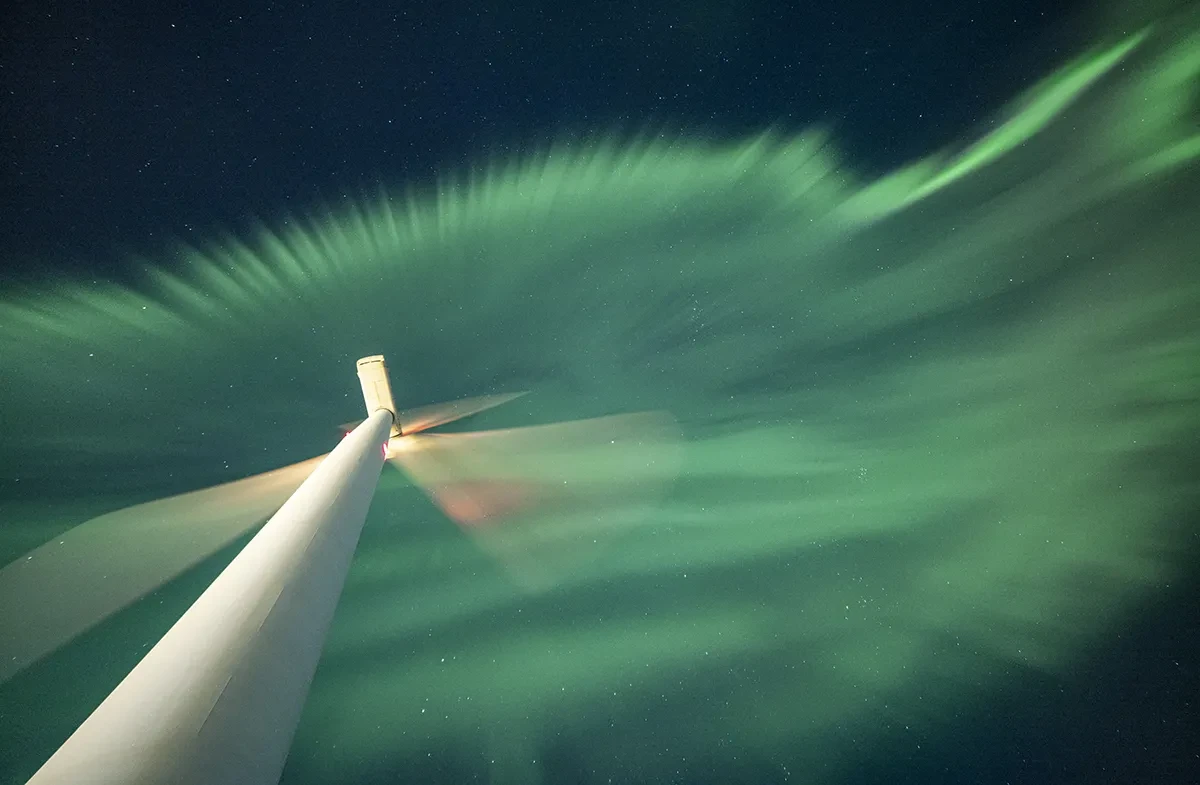
Solar Wind Power by Esa Pekka Isomursu
North Ostrobothnia, Finland, 9 January 2022
A vivid auroral corona behind a wind turbine gives the illusion of an interaction between the two, as if the turbine were driven by the solar wind (or, depending on the viewer, we might think that the turbine disperses the aurora).
The tongue-in-cheek title 'Solar Wind Power' also refers to our need for finding new renewable energy sources. This is a single two-second exposure, taken during a strong auroral storm in northern Finland.
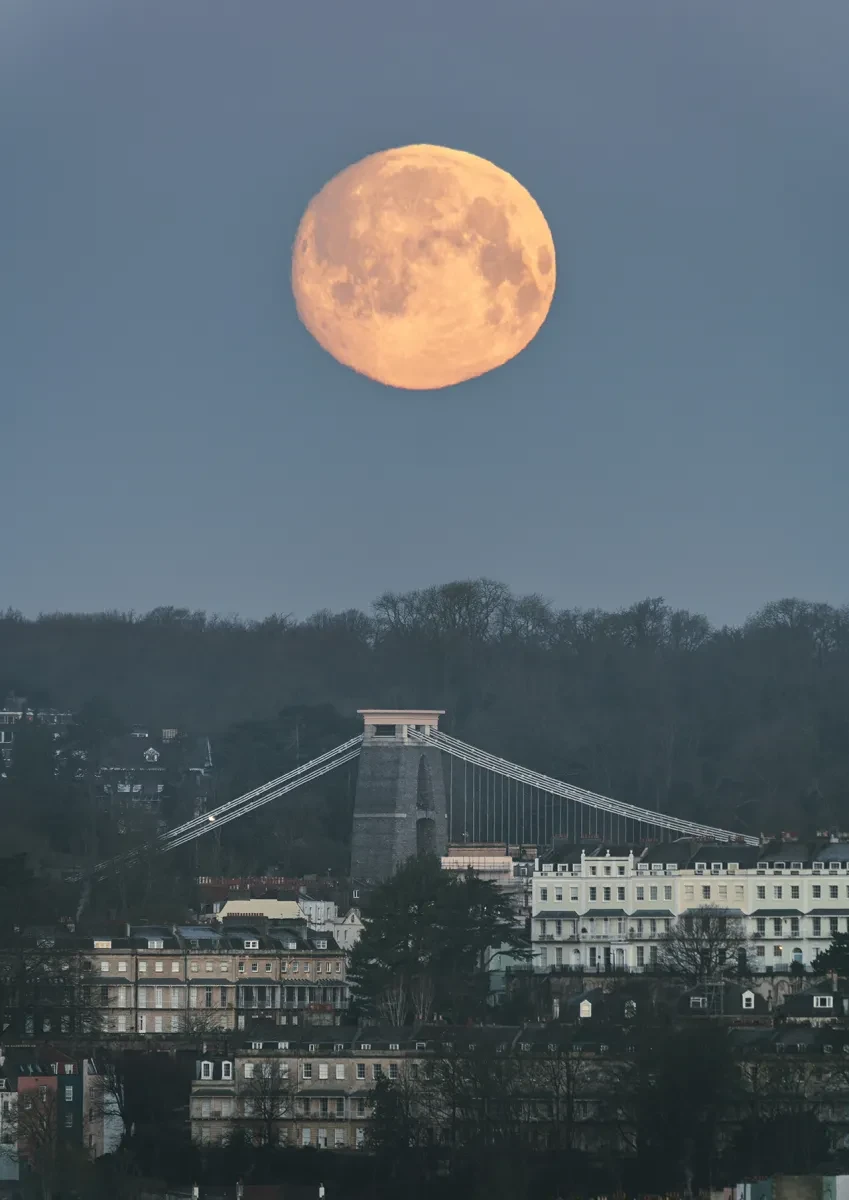
Lunar Lander by Sam Binding
Bristol, UK, 26 February 2021
Here, the Snow Moon sets over Clifton Suspension Bridge in Bristol. This was a fluke of a morning. I hadn’t actually intended to head out to photograph the Moon and was on my way into town to walk the dog. Thankfully, I had packed my camera and as I drove down the hill towards the city centre I caught sight of this amazing view. Luckily, I had my 100–400-mm lens and x2 teleconverter with me!
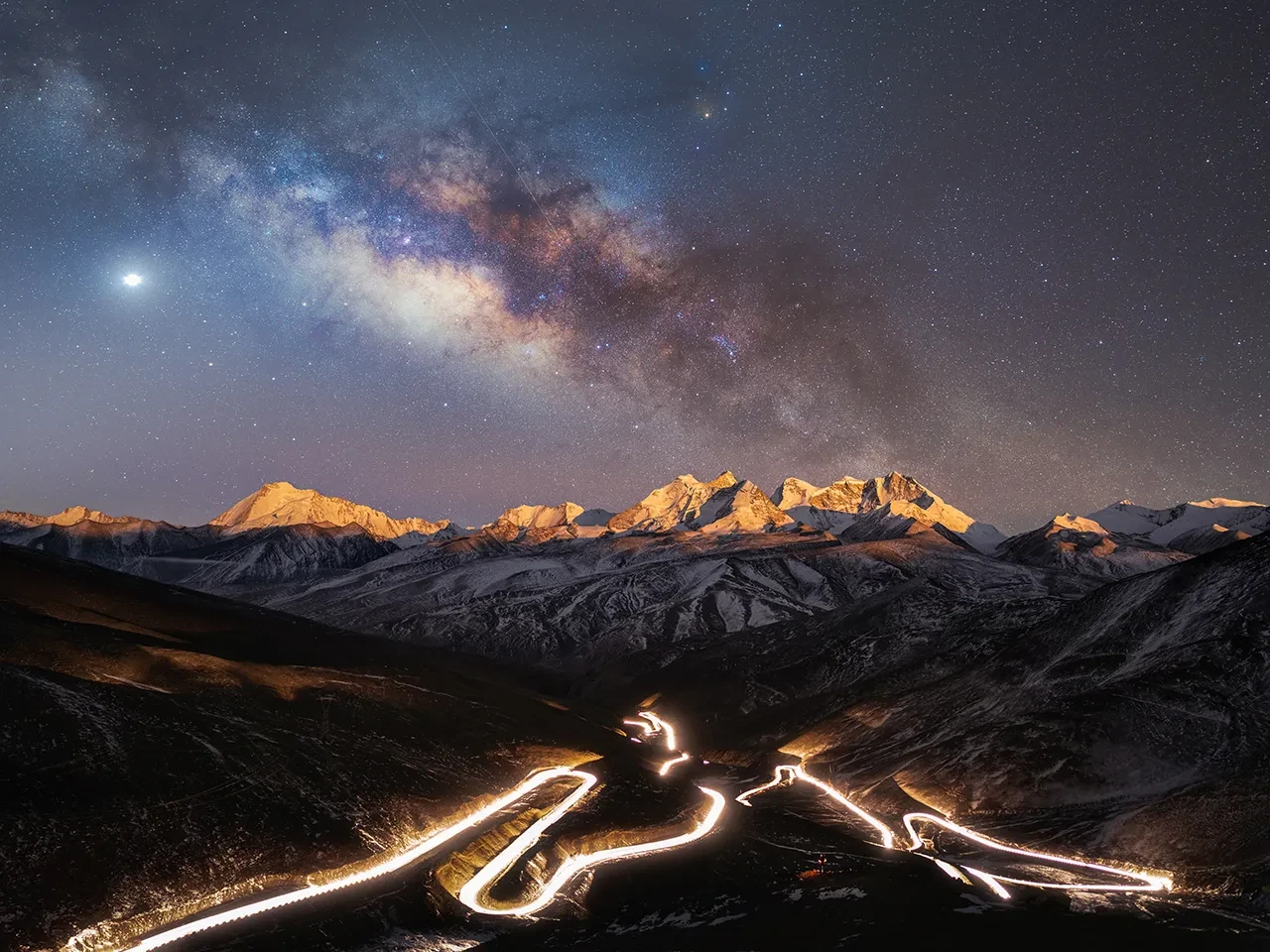
The Starry Sky Over the World's Highest National Highway by Yang Sutie
Shannan, Tibet, China, 14 February 2022
Mount Kula Kangri is a mountain located in Shannan Prefecture, Tibet, with an altitude of 7,538 metres. In front of it, reaching an altitude of around 5,400 metres, is National Highway 219. It is the highest highway in the world.
On the day of shooting, when the Milky Way rose behind the snowy mountain, the Moon had just set in the west – the faint moonlight shone golden on the snow-covered peaks. The Milky Way was undisturbed by the light of the Moon.
Shooting this photo involved three distinct parts. For the first part I used an equatorial instrument to capture the sky. This instrument was then turned off to shoot the ground using the same technical parameters. For the third part, I increased the camera’s ISO-value and used a short exposure time. To me, the stars and snowy mountains symbolize eternity. Together with the great human-made structure, they depict our courage and will to transform nature.
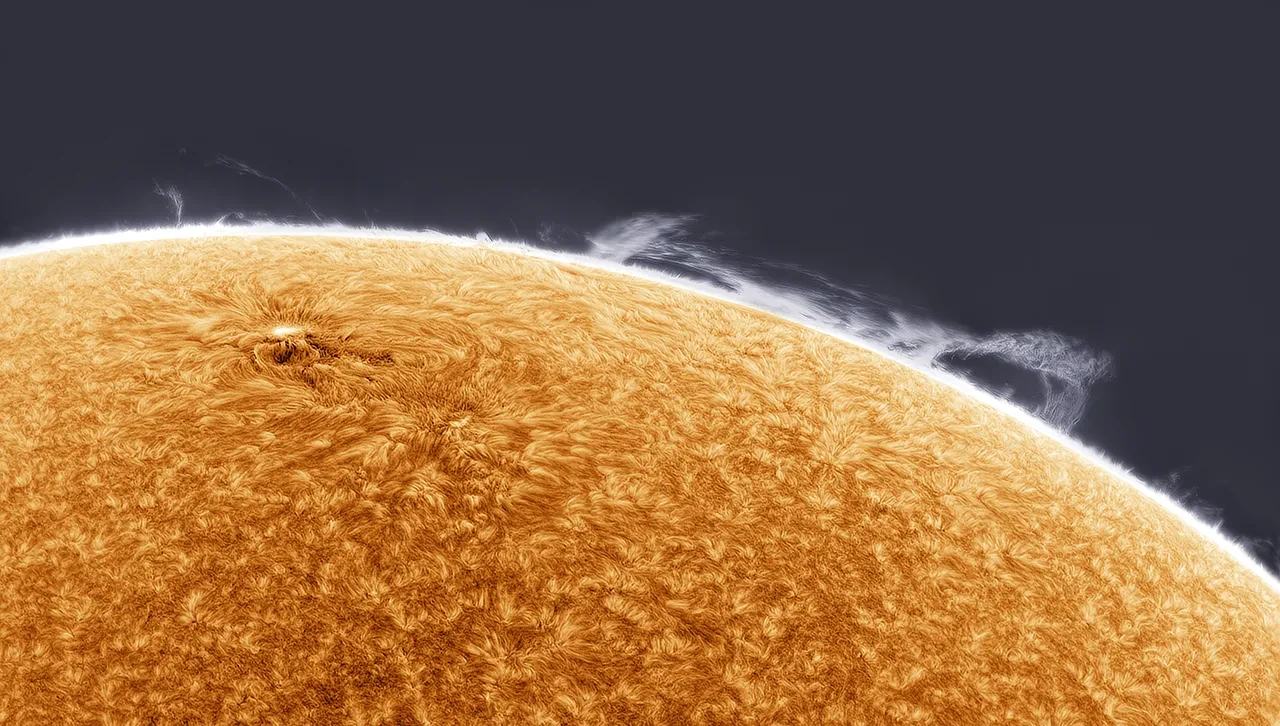
Clouds of Hydrogen Gas by Simon Tang
Los Angeles, California, USA, 1 October 2021
Clouds of hydrogen gas give way as the magnetic field lines of the Sun and snap and clash together in an endless dance. This display creates astonishing features, known as prominences, on the limb of the Sun.
Some reach far into space, eventually slamming into Earth’s atmosphere, while others arc across the Sun spanning millions of miles across. Make no mistake, these are not clouds on the Sun but super-heated plasma that could destroy worlds in the blink of an eye! This shot was built up with several captures and stitched together to create a high-resolution final image. Colour was added for dramatic effect.
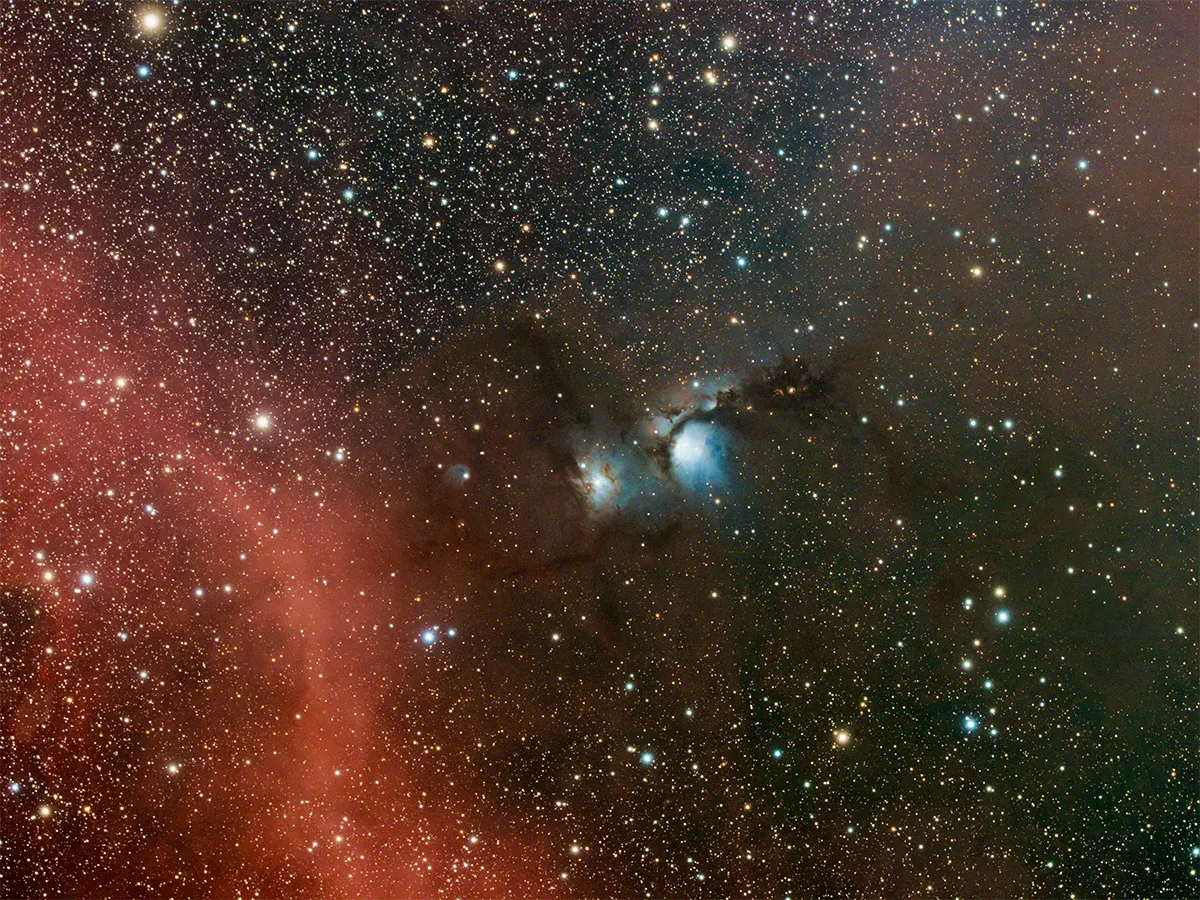
Messier 78 by David Loose
Blanco, Texas, USA, 5–6 January 2022
M78 is a reflection nebula near Orion. This image also includes the nebulae NGC 2064, NGC 2067 and NGC 2071. On stacking the files, I was surprised by how bright Barnard’s Loop was in the lower left corner, so I added another night’s worth of imaging to bring out as much detail as I could.
The final composition was stacked and stretched using Astro Pixel Processor. I love the star field, though I’ve thought of going back to remove it. It reminds me of the effect achieved by spattering paint with a toothbrush on a canvas, but the relative absence of stars near the nebula helps to bring focus to the appearance of the blue clouds with dark streaks arcing through them.
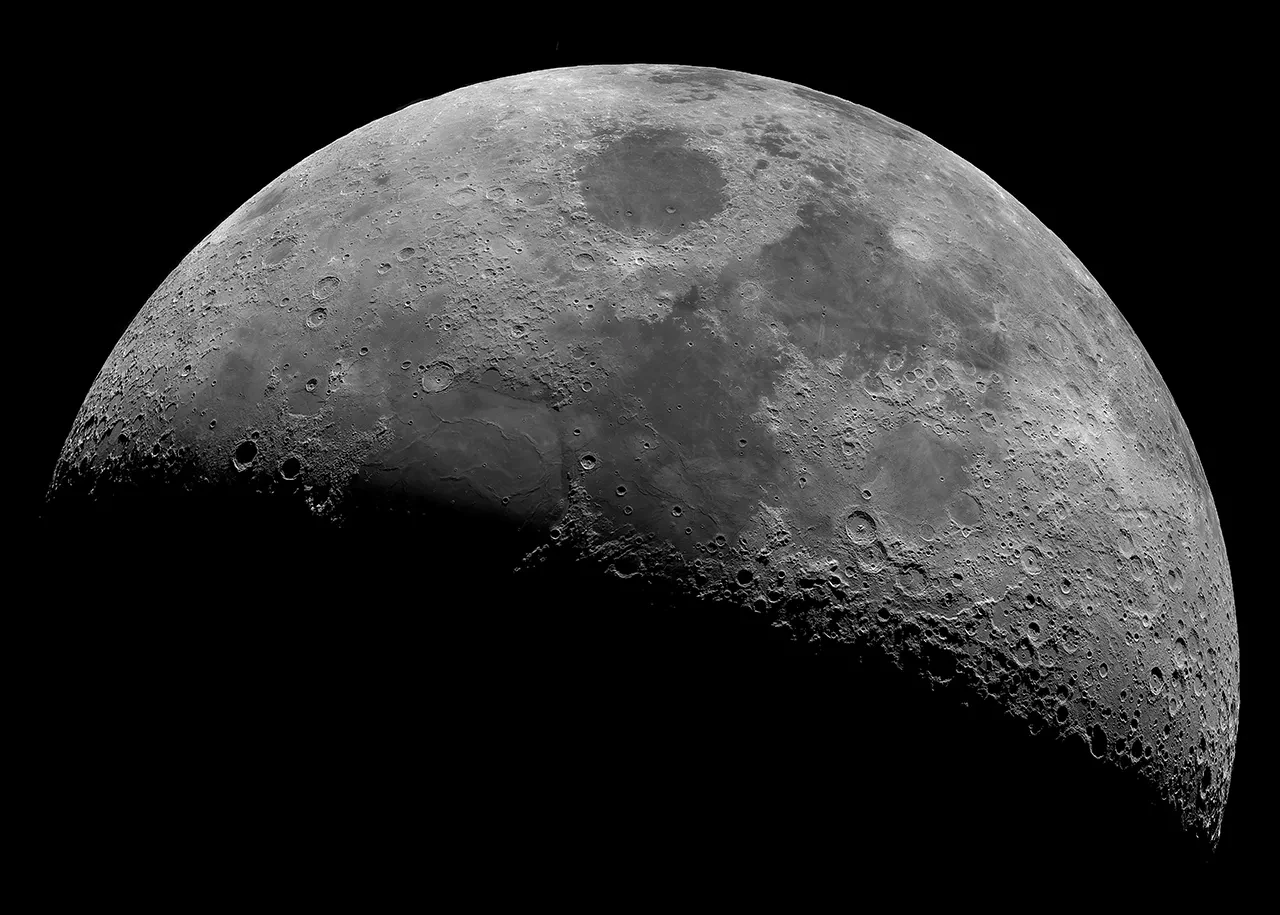
Moon: Big Mosaic by Andrea Vanoni
Porto Mantovano, Lombardy, Italy, 19 January 2021
This is a 32-panel mosaic of the crescent Moon. The assembly process was particularly complex due to the lunar libration (wavering of the Moon as viewed from Earth), which changed during the two hours I spent shooting on that January evening. In this image you can see the most famous craters, rims, mountains, domes and seas of this lunar phase.
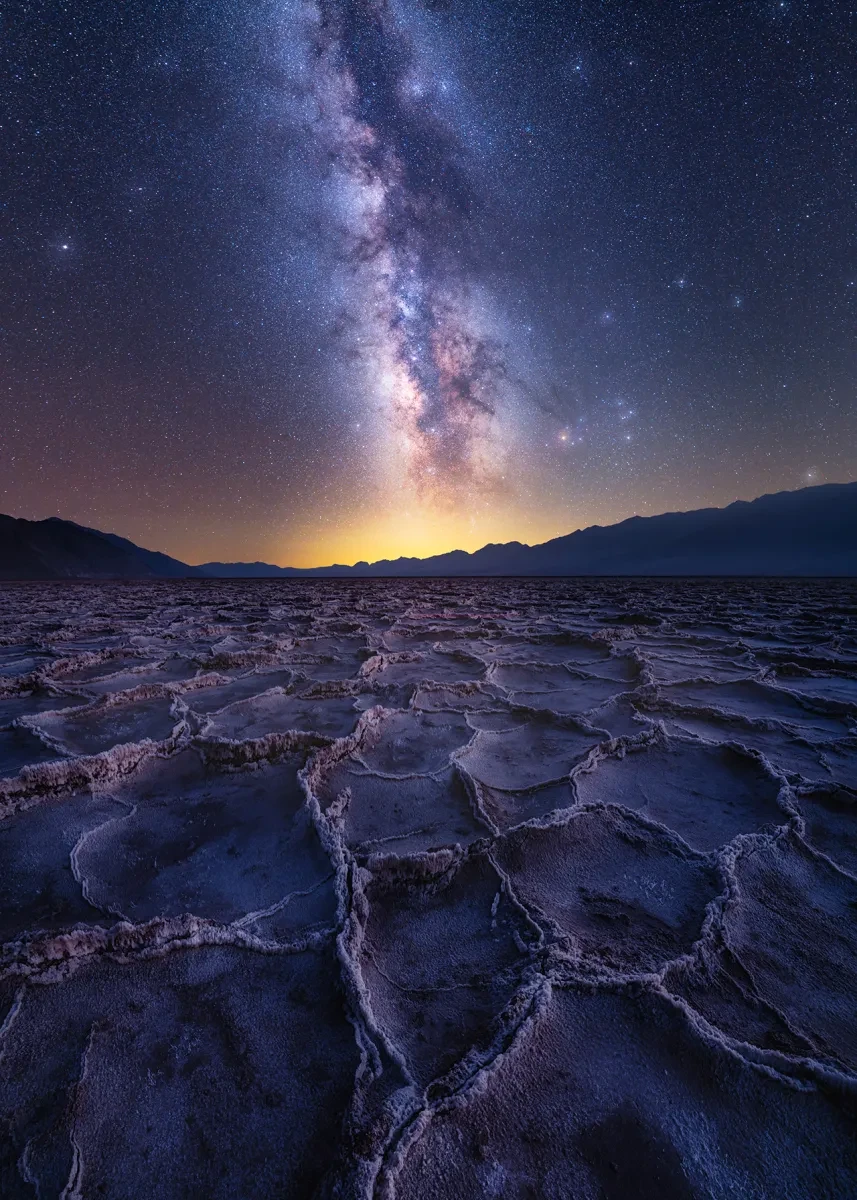
Badwater Milky Way by Abhijit Patil
Death Valley, California, USA, 2 September 2021
Some of the most exquisite locations in Death Valley National Park are the salt flats at Badwater Basin. Located 86 metres below sea level, the basin is the lowest point in North America. Every winter brings new rainwater to the flats and the continuous freeze-thaw-evaporate process creates these hexagonal patterns in the mud.
This was the most unique salt structure I had ever seen. The top layer of mud is covered with salt crystals. I walked a good one to two miles from where I’d parked to see the best patterns in the flats. I shot the foreground with my tracker off during the blue hour and then waited for the Milky Way to show up a couple of hours later. I started my tracker and took a 300-second exposure. I blended these two images in post-processing.
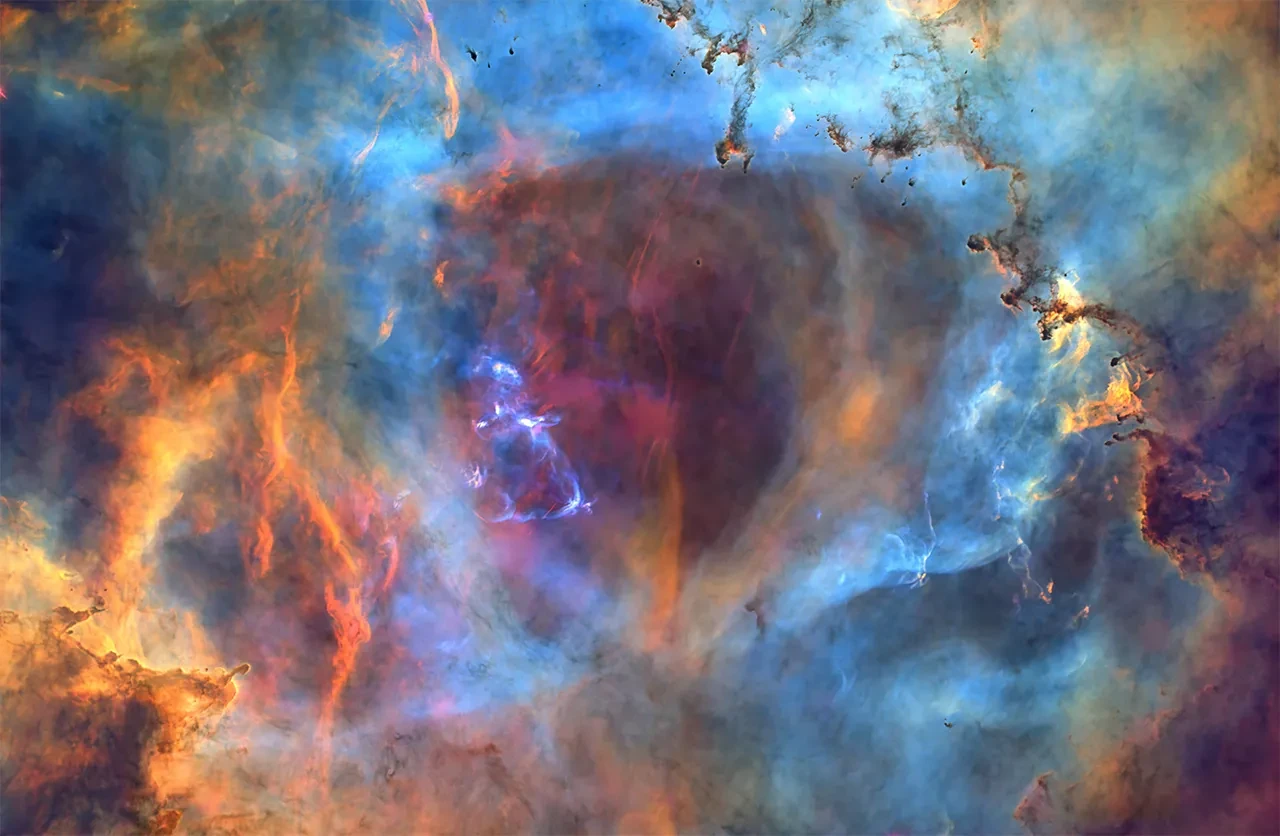
Rosette Nebula Core Region (NGC2244) by Alpha Zhang
Lijiang Gemini Observatory and Kunming Yunling Observatory, China, 24–30 October and 1-2 November 2021
The first time I saw such a narrowband NGC 2244 photo it was part of website advertisement for a filter. At the time, I was shocked. In autumn 2021, two of my remote observatories were set up and I had the opportunity to shoot it. The result was satisfying and I felt it matched the quality of the filter advertisement.
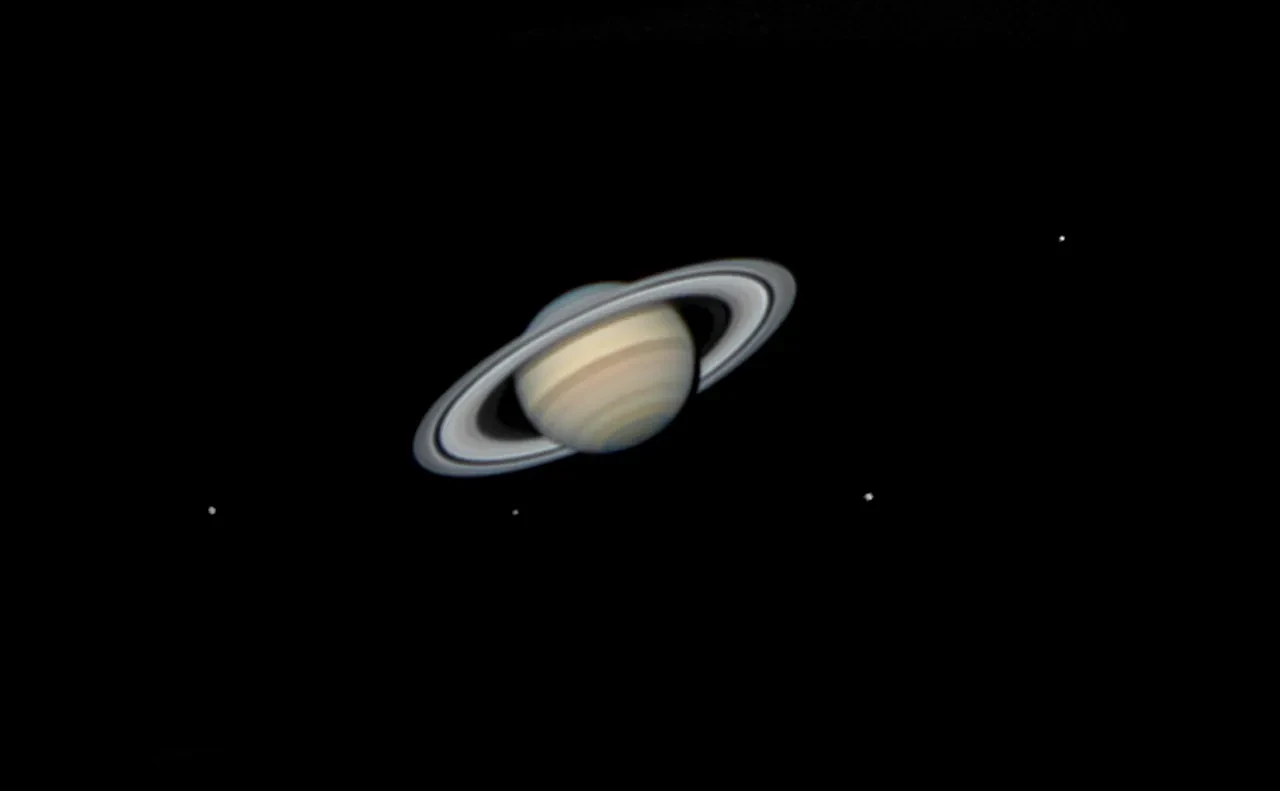
Saturn and Its Moons by Flávio Fortunato
Maceió, Alagoas, Brazil, 25 August 2021
This image shows Saturn surrounded by its moons. I was lucky enough to capture it at a time when the moons were distributed almost symmetrically around the planet, helping to make the composition harmonious. It was an exciting photo to capture, because the atmosphere during the night was very calm and I knew that the final image would be of a quality beyond that of the photos I had been taking on turbulent nights.
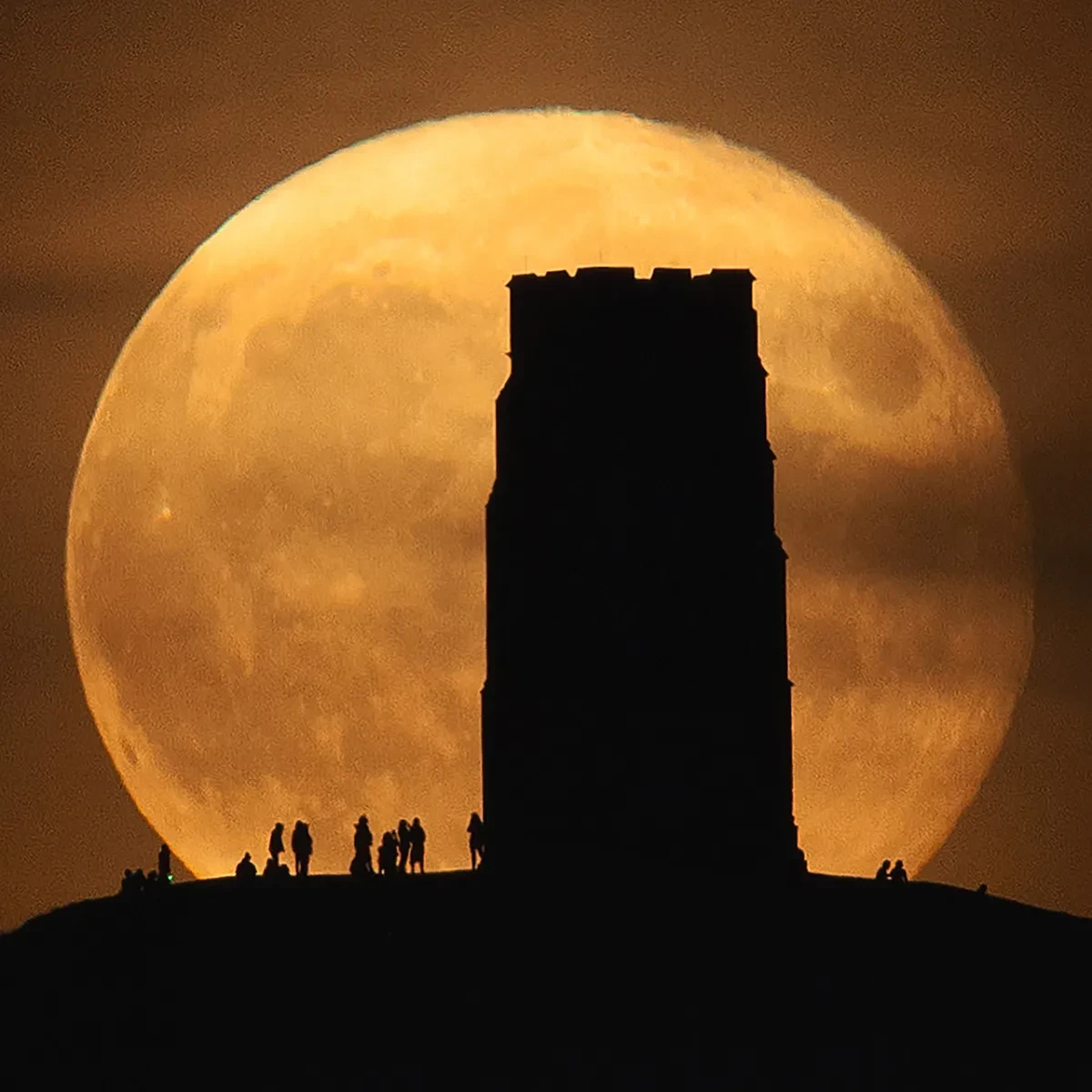
Equinox Moon and Glastonbury Tor by Hannah Rochford
Glastonbury, Somerset, UK, 21 September 2021
In 2021 I really got into imaging the Moon at a distance with something in the foreground. In this case, it is people enjoying the Full September Harvest Moon as it rises behind Glastonbury Tor.
The first time I planned a moonrise (using PhotoPills) and saw the Moon rising was absolutely magical. I cannot explain how it felt. The perspective never fails to excite me. I took this from a few miles away from the Tor to get that ‘gigantic’ Moon look.
Capturing the Moon is what led me into my deep-sky astrophotography journey, which is my favourite thing. A lot of people think that this is a composite, but it is one image. I took it with my 10-year-old, second-hand Canon camera.
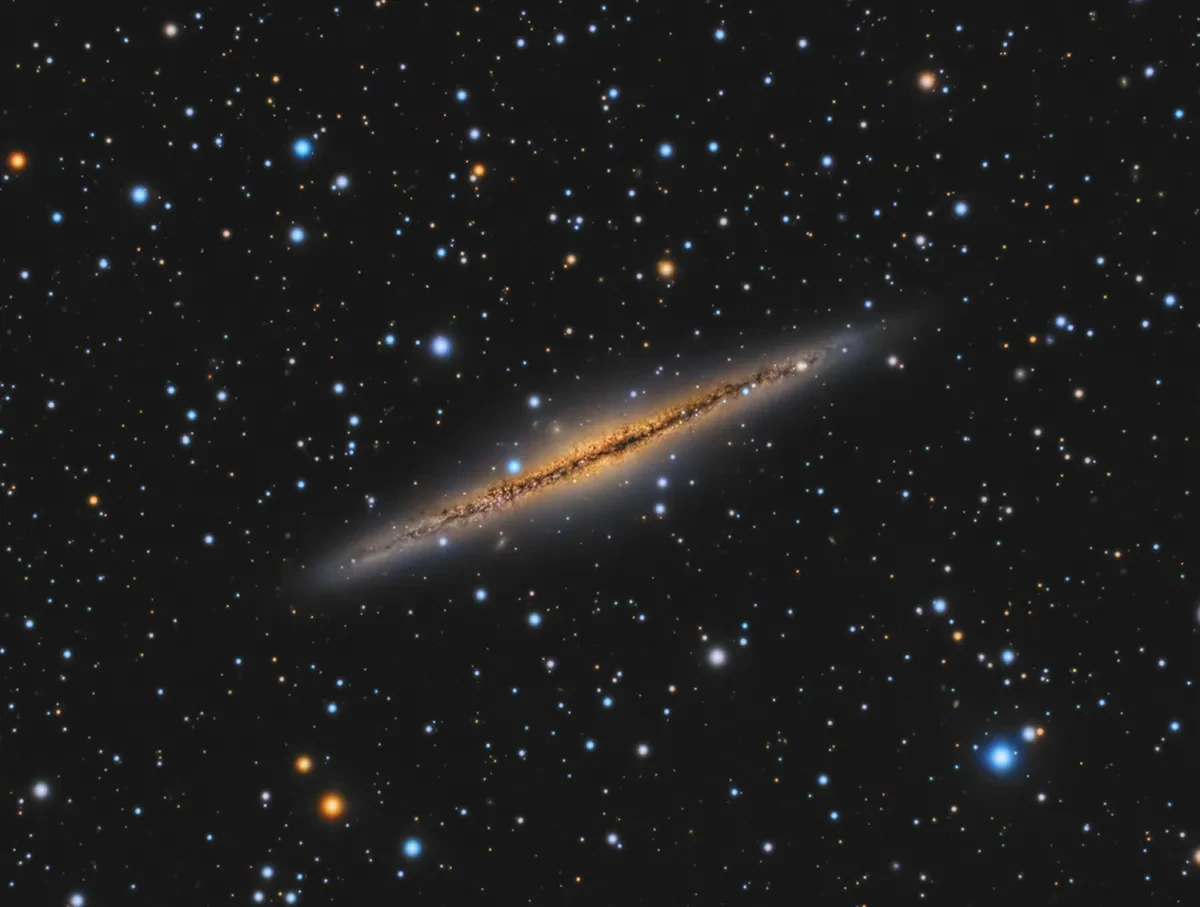
Edge-On by Jason Guenzel
Milford, Michigan, USA, 4 November 2021
When viewing galaxies along the plane of the spiral disc, we are treated to a unique sight. The interstellar dust within the galaxy is backlit by the starlight glowing within. This is the same way we see our home galaxy, the Milky Way, when it is stretching overhead – but we are within it, and unable to get the full picture.
In the case of NGC 891, we are 30 million light years away. The entire galaxy comes into view and we see a diffuse halo crossed with a complex dark dust lane. These tendrils of dust are the fuel for a new generation of stars. There aren’t many close galaxies that are oriented this way, but these select few are truly gems of the night sky. This image was shot and displayed in natural colour tones using almost 23 hours of total exposure time.
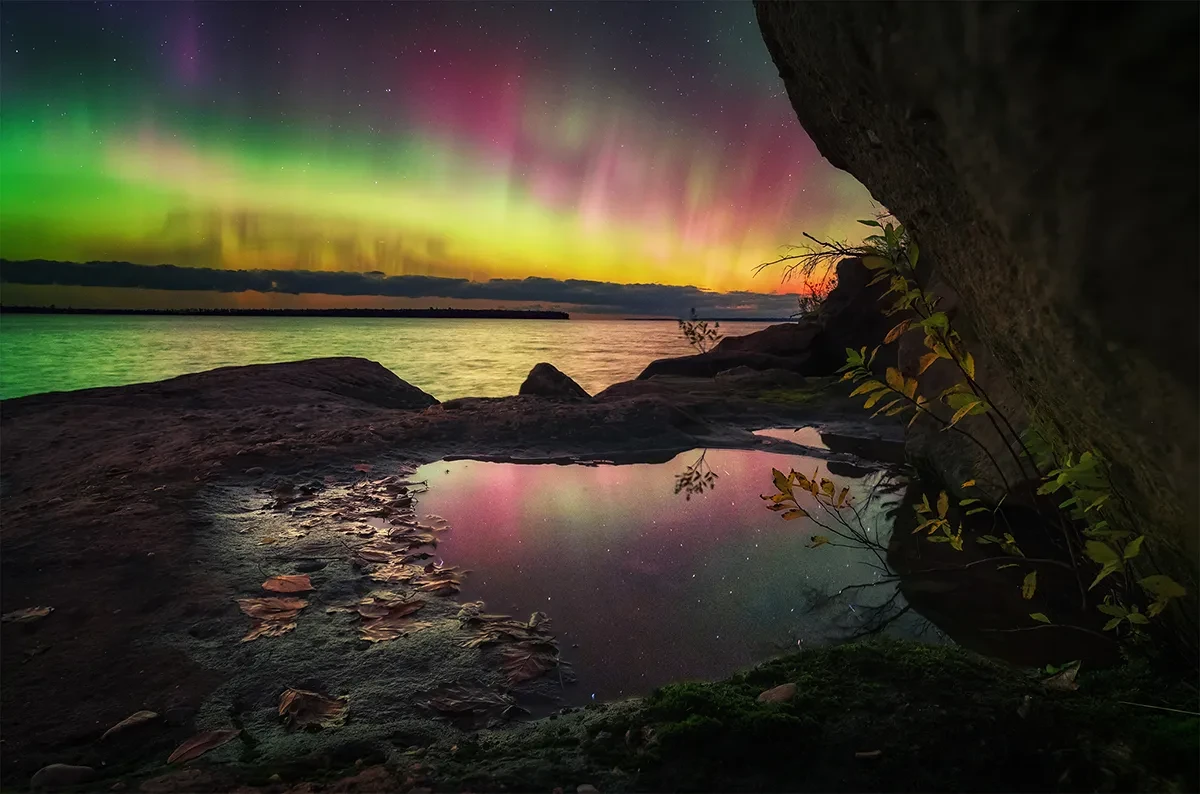
Aurora Sherbert by MaryBeth Kiczenski
Bayfield, Wisconsin, USA, 4 November 2021
The night of 3 November into 4 November 2021 was one for the memory books! A number of solar storms hit the planet at the same time, sparking a G3-level (strong) geomagnetic storm.
I drove eight hours to a place I have never been to because it was one of the only areas without completely overcast skies. I really wanted to showcase a landscape element in my photograph as well, so I found this little puddle and rock that ended up reflecting the aurora beautifully. I used an auto-modified camera so there’s a bit more red showing, although with the power of this event red was visible even in unmodified cameras. I did choose to focus stack this image to get the most from the foreground elements.
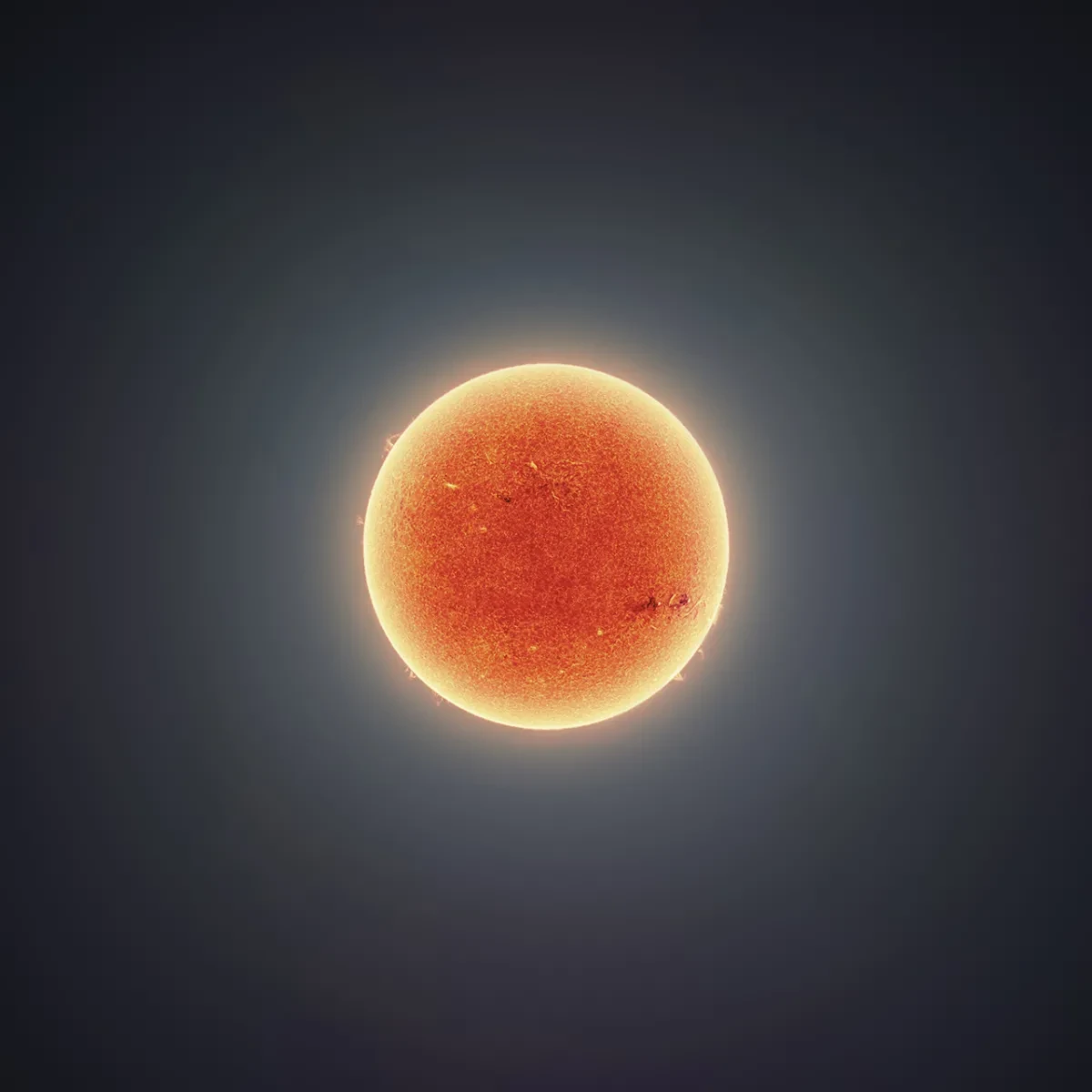
Fire and Fusion by Andrew McCarthy
Florence, Arizona, USA, 29 November 2021
This 300-megapixel image of our Sun was captured to show multiple large prominences and an incredibly dynamic active region, imaged in H-alpha light and processed, partially inverted, with false colour. This shot was composed to enable an appreciation of the Sun in its entirety, but with such detail that you want to keep zooming into the surface to explore every facet of its incredibly dynamic chromosphere. To achieve this, I captured more than 300,000 individual 16-bit TIF images, which were hand-sorted and then processed in batches to reveal this clear view of our nearest star.
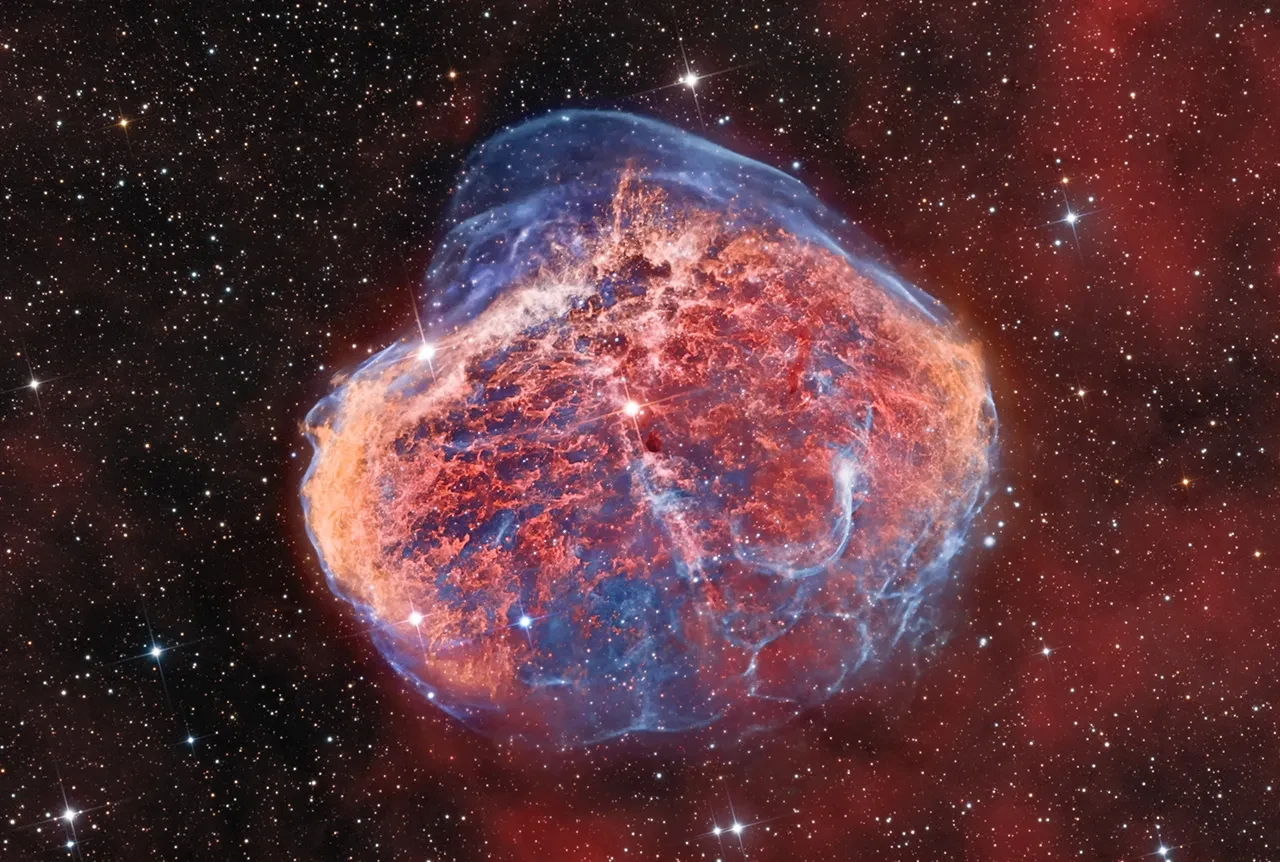
NGC 6888 - The Crescent Nebula by Bray Falls
Auberry, California, USA, 27 August–1 September 2021
This image shows a deep view of the Crescent Nebula in Cygnus, the result of shockwaves originating from the Wolf–Rayet star WR 134. This is a bicolour narrowband image with RGB stars: the nebula details were created from a false bicolour narrowband combination of H-alpha and OIII and the star colours were added from a natural RGB image. All exposures were captured with a high-frequency AO guider at very high-resolution (0.2"/pixel), requiring great seeing. I'm really satisfied with the level of detail in the image and the strength of the OIII shell.
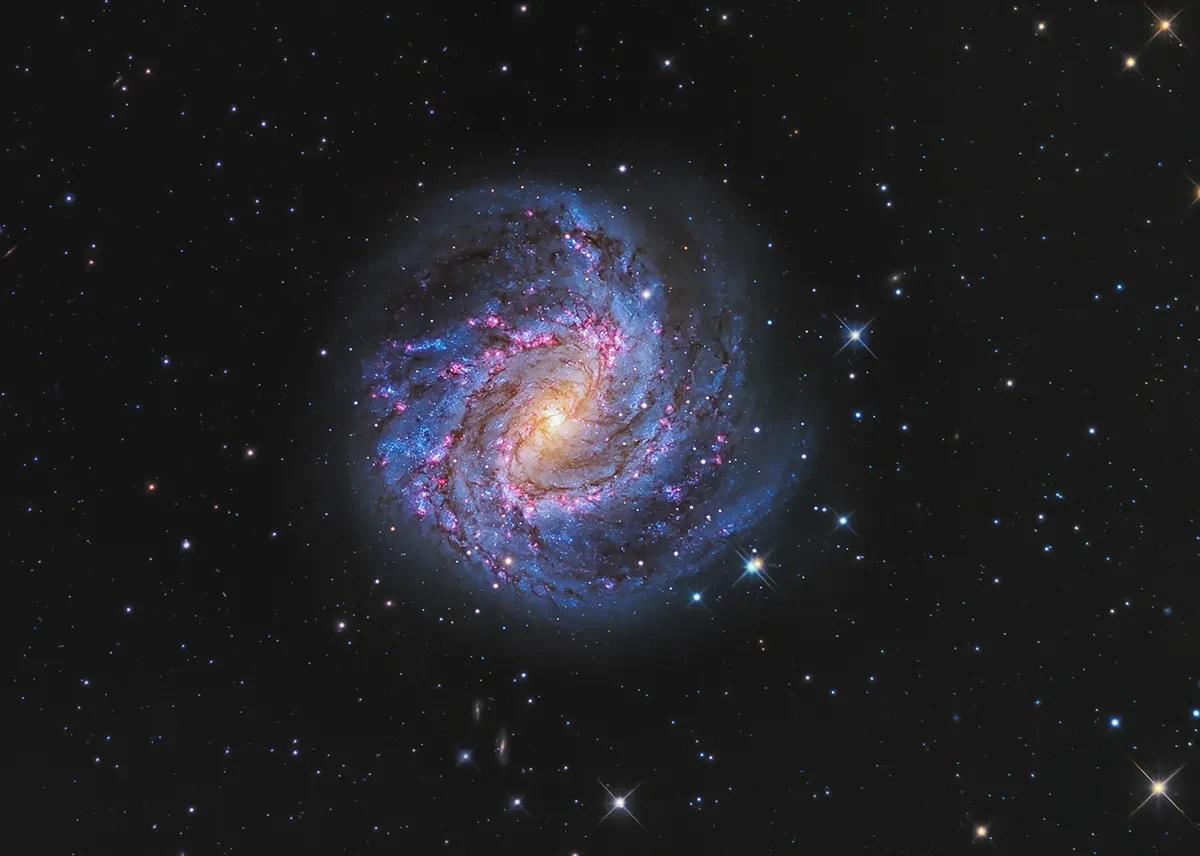
Hydra’s Pinwheel by Peter Ward
Barden Ridge, New South Wales, Australia, 30 March 2021, 19 and 23 February 2022
Nicolas-Louis de Lacaille first observed what later became known as the Southern Pinwheel Galaxy on 23 February 1752 from the Cape of Good Hope, South Africa. This image, taken exactly 270 years later, combines a deep set of Hydrogen-alpha exposures along with colour data to highlight the ruby-like star-forming regions of this beautiful barred spiral galaxy. It has exposures taken in 2021 and 2022 using CCD and CMOS cameras that combined give a level of detail that would be very difficult to obtain with just one camera. This colourful Catherine wheel is powered by the light of millions of distant suns.
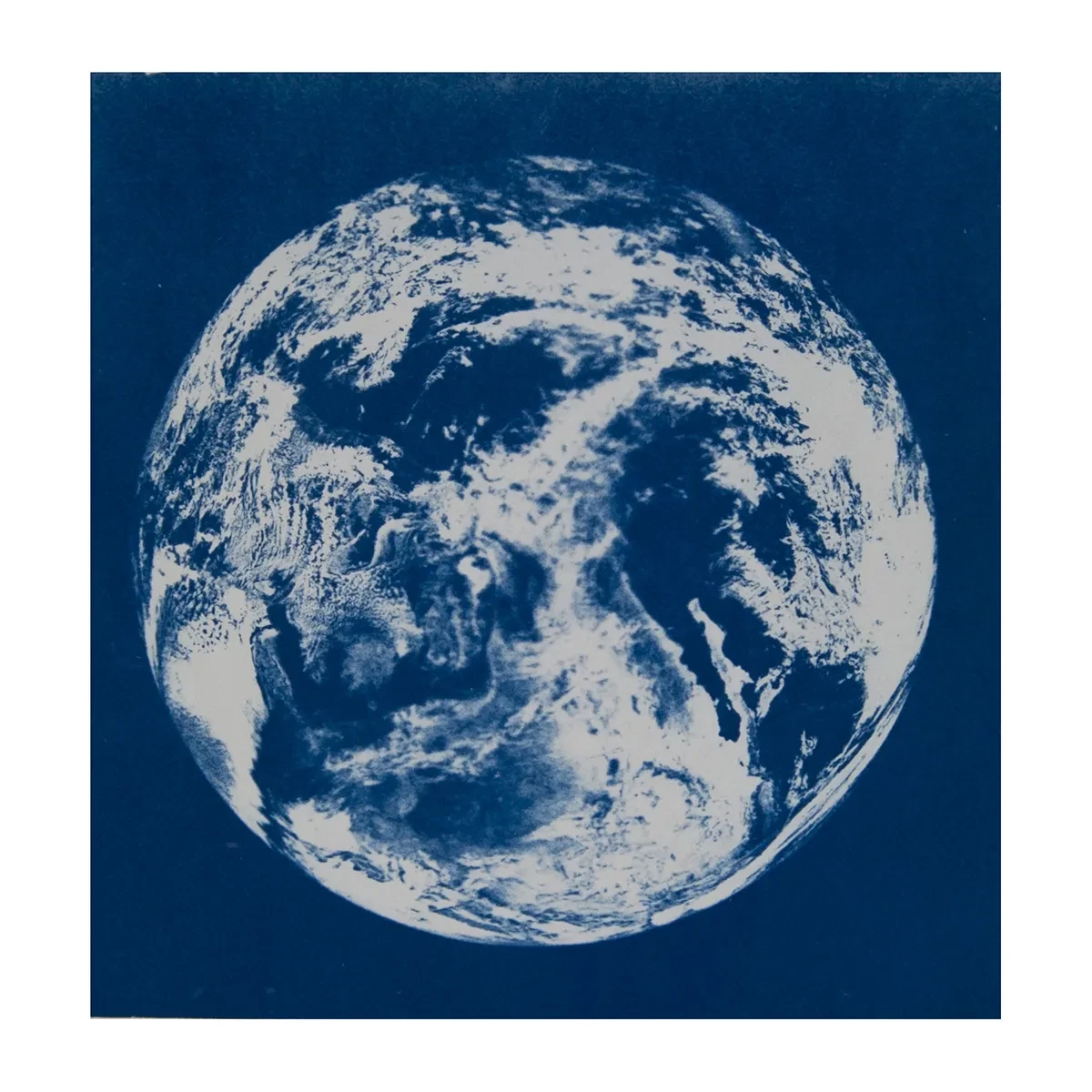
Earth Cyanotype by Lynda Laird
This is a cyanotype photographic print made from an image of the Earth by NASA. This alternative photographic process was discovered by the astronomer John Herschel in 1842. The image is created by coating a piece of watercolour paper with UV light-sensitive cyanotype solution. I created a digital negative from the NASA image, printed it onto acetate and placed it on top of the coated paper before putting it outside to use the Sun’s UV-rays to develop the image.
I like the idea of merging older traditional processes with new technology and also the simplicity of this image; using the Sun to expose the image of the Earth feels quite poetic when considering what life would be without the Sun’s light and Annie Maunder’s own work photographing the Sun. This piece came in response to research I was doing in the Royal Astronomical Society’s Archive in connection with Caroline Herschel (John’s aunt), another pioneering woman in the field of astronomy, who was overlooked due to her gender.
Exhibition partners


Main image: Badwater Milky Way by Abhijit Patil, Astronomy Photographer of the Year 2022
